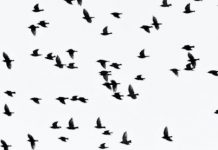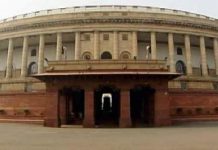Performance art may exist in a moment, but Inder Salim tries to pin it down, says Aradhna Wal

Photo: Arun Sehrawat
IN 2002, Inder Salim cut off his finger and threw it in the Yamuna to protest the pollution and slow death of the river. When that reputation precedes, it’s almost fair to assume the man is a kook. However, for this 47-year-old performance artist from Kashmir, everything carries meaning. He deliberated for months, before the actual act materialised as a sincere, if dramatic, ritual. Life for Salim, down to his name, is a carefully constructed performance. “I’ve forgotten what my original name was. What does it matter,” he says breezily.
Dressed in an oversized black Kashmiri kurta, his jeans discarded on the floor, flowers in his hair and his buttonhole, Salim leans back against the wall. “I started performance art in the 1990s after I failed as a painter. I couldn’t sell a thing. Soon, I couldn’t even afford paint,” he reminisces. Now, he leads his collective Harkat: The School/Unschool of Performance, which is holding a meeting at the Devi Art Foundation, Gurgaon. Currently participating in the Sarai Reader 09 exhibition, the Delhi-based artist works with a number of performance artists to enact, display and discuss their creation. His proposal for Sarai was to document performance art through Harkat’s revolving door. This week, Ranjit Singh from Patna lamented MF Husain’s death in exile, marking his chest, forehead and knee with dirt collected from different parts of India. Earlier, artists accompanied Salim to the dhobi community on the banks of Yamuna. As some interacted with the washermen, Salim climbed into vats of washing and bleaching fluids, to literally immerse himself in thesubstance of their lives. Both performer and observer, he plans to pen down these varied contributions to Harkat.
‘School/Unschool’ — unlearning preconceptions to better understand art — is integral to his work and he freely merges ideas and dismantles structures. He says, “It is a shift in the art world, where rules of aesthetics are being broken and different forms are coming together. I’m trying to write down what is created when these different ideas meet. Let’s see how it goes.” That undercurrent of anxiety perhaps haunts all artists.
Salim keeps mementoes of every performance, pays special attention to pictures taken and is now trying to use words to impart them an afterlife. Capturing something as temporary as performance art could be an exercise in futility. Sarai Reader 09 curator Shuddhabrata Sengupta says, “It may be a paradox, but it is a productive one. Performance art underscores the relationship between memory and the ephemeral. The trace a recording holds may be valuable, as something to look back on as a memento of a moment of intensity and value.”













